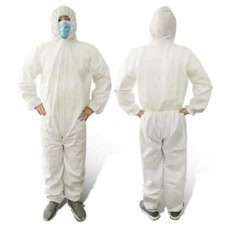Infection control is a critical aspect of healthcare, especially in surgical settings, where the risk of infection is heightened due to open wounds and invasive procedures. Surgical gowns play a vital role in infection control by acting as a barrier between healthcare professionals and the patient’s sterile surgical field, helping to minimize the risk of infection. Here’s how surgical gowns contribute to infection control:
- Preventing Contamination: Surgical gowns are designed to be impermeable to fluids, including blood and other bodily fluids. This prevents these fluids from coming into contact with the surgical team’s clothing, skin, or mucous membranes, reducing the risk of transmission of pathogens from the patient to the healthcare workers or vice versa.
- Maintaining Sterile Fields: In a surgical setting, maintaining a sterile field is crucial to prevent the introduction of pathogens into the surgical site. Surgical gowns, along with sterile drapes and other sterile equipment, help establish and maintain this sterile environment. They ensure that only sterile surfaces come into contact with the surgical site, minimizing the risk of infection.
- Protecting Healthcare Workers: Surgical gowns not only protect the patient but also safeguard the healthcare professionals involved in the procedure. By preventing exposure to the patient’s bodily fluids and potential pathogens, surgical gowns reduce the risk of healthcare workers contracting infections during surgery. This is essential for their safety and well-being.
- Compliance with Aseptic Techniques: Infection control in surgery relies heavily on aseptic techniques. Surgical gowns are a fundamental component of these techniques, helping to ensure that the surgical team follows strict protocols to maintain a sterile environment. Adherence to these techniques is crucial for preventing surgical site infections.
- Minimizing Airborne Contaminants: Surgical gowns are often designed with specialized materials and features to minimize the shedding of particles and contaminants into the air. This helps reduce the risk of airborne transmission of pathogens within the operating room, further enhancing infection control.
- Standardized Practices: The use of sterile surgical gowns is a standardized practice in healthcare settings. This standardization ensures consistency in infection control measures across different healthcare facilities and surgical procedures, promoting best practices and reducing the risk of errors.
- Patient Safety: Ultimately, the primary goal of infection control measures, including the use of surgical gowns, is to protect the patient. Surgical site infections can have serious consequences for patients, including prolonged hospital stays, additional medical treatments, and increased healthcare costs. Surgical gowns help mitigate these risks.
In summary, surgical gowns are a critical component of infection control in surgical settings. They serve as a barrier to prevent contamination, help maintain sterile fields, protect healthcare workers, and contribute to the overall safety and well-being of both patients and surgical teams. Properly designed, manufactured, and used surgical gowns are essential for reducing the risk of infections in healthcare settings.























